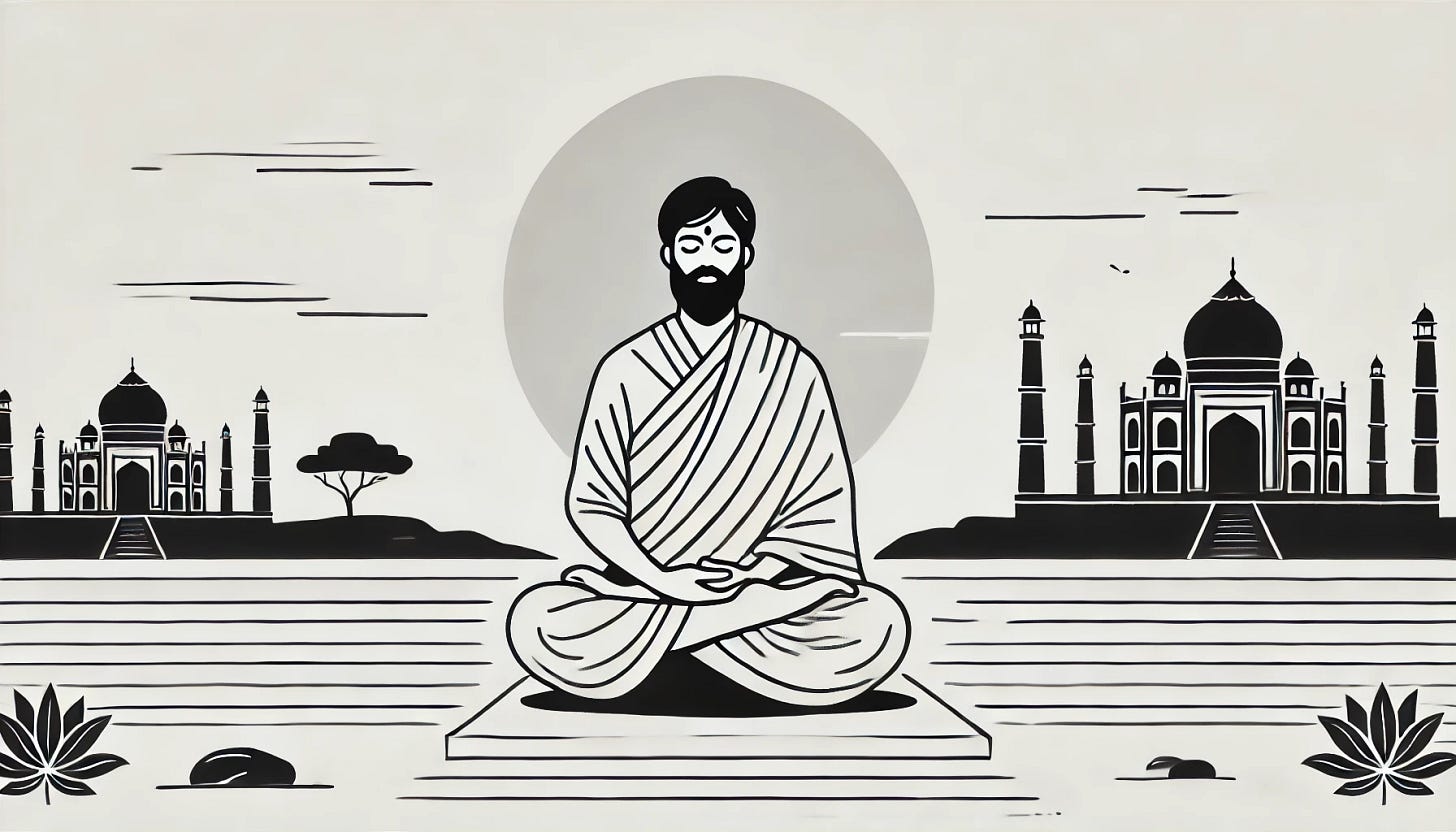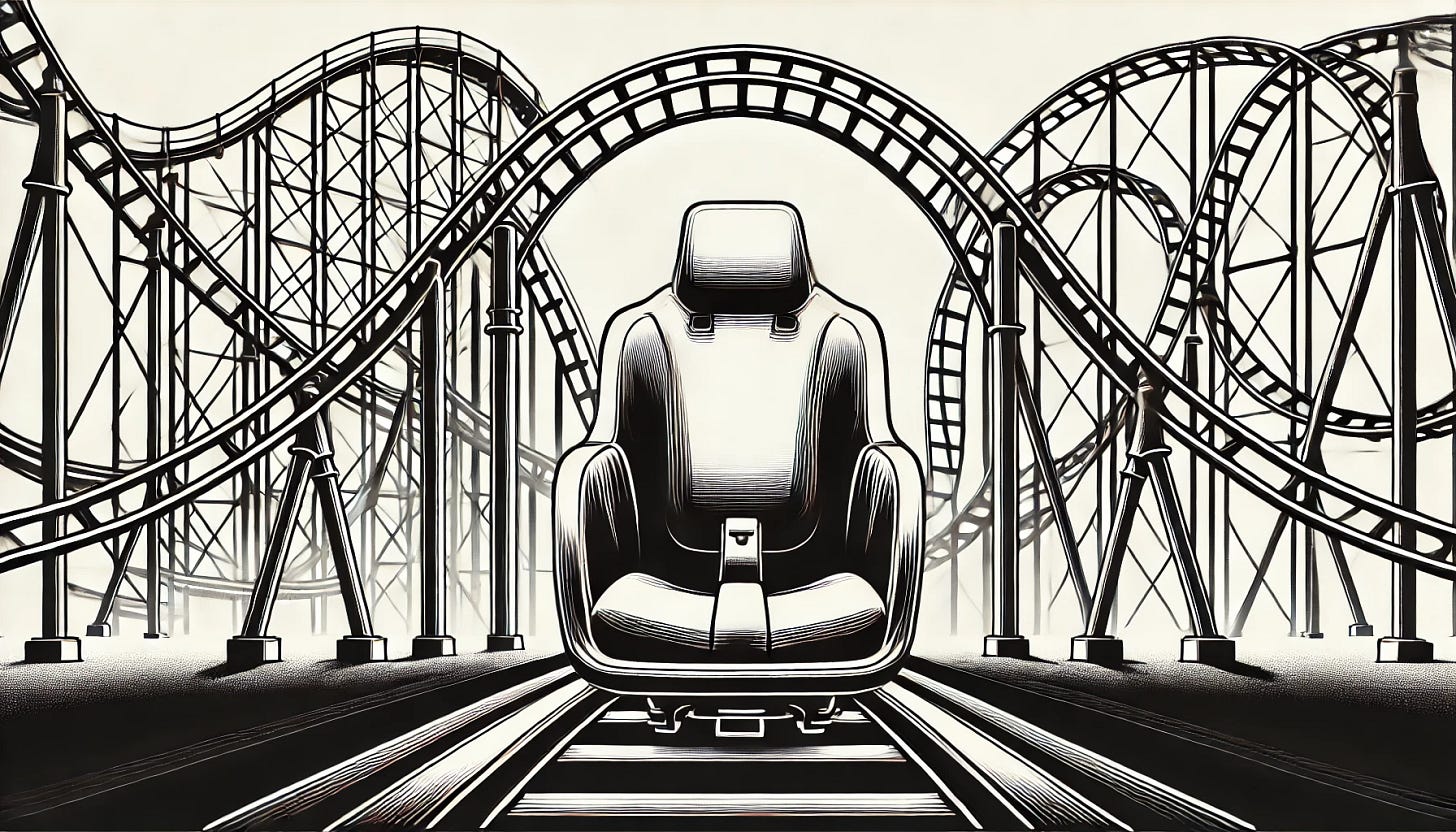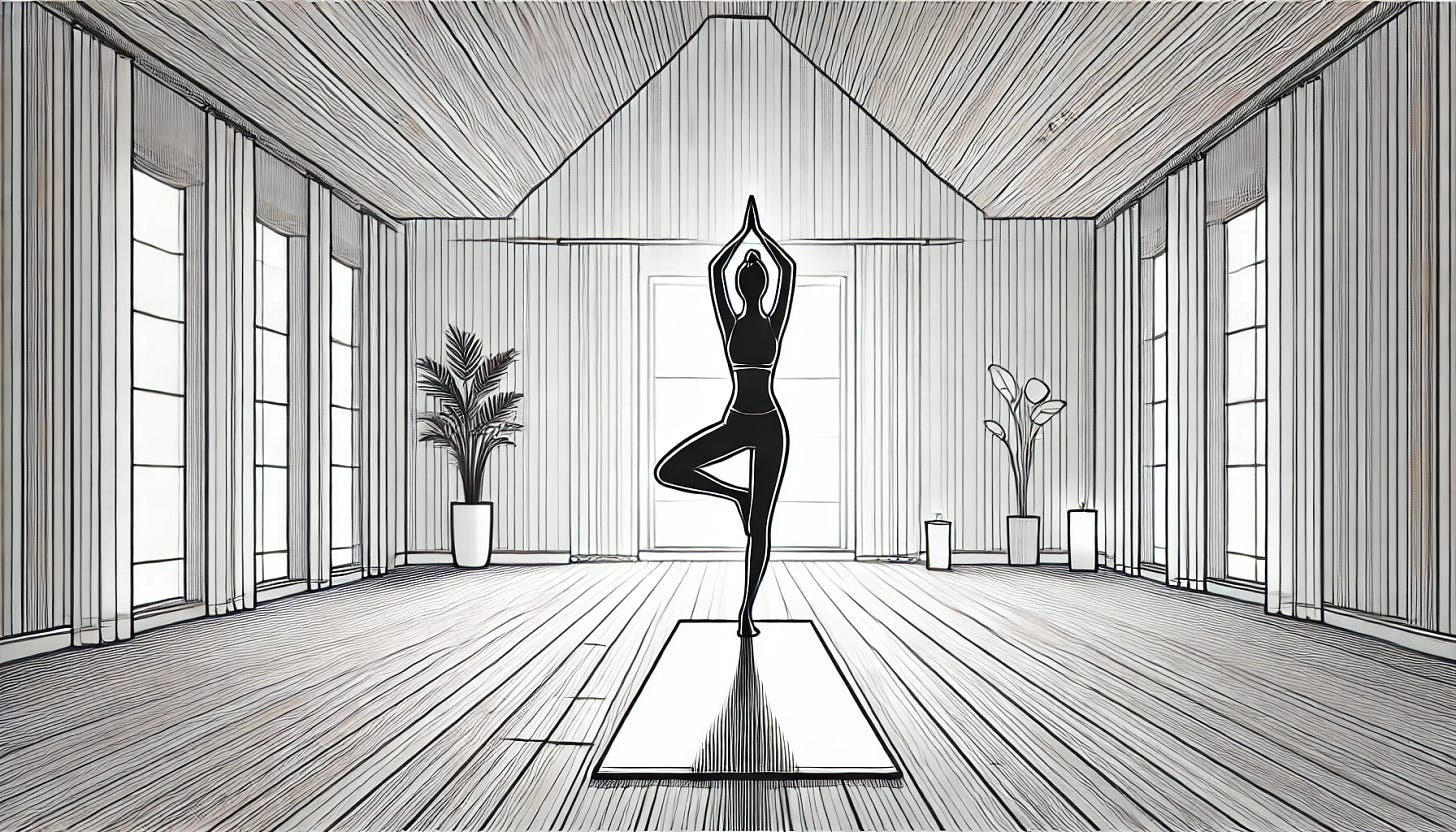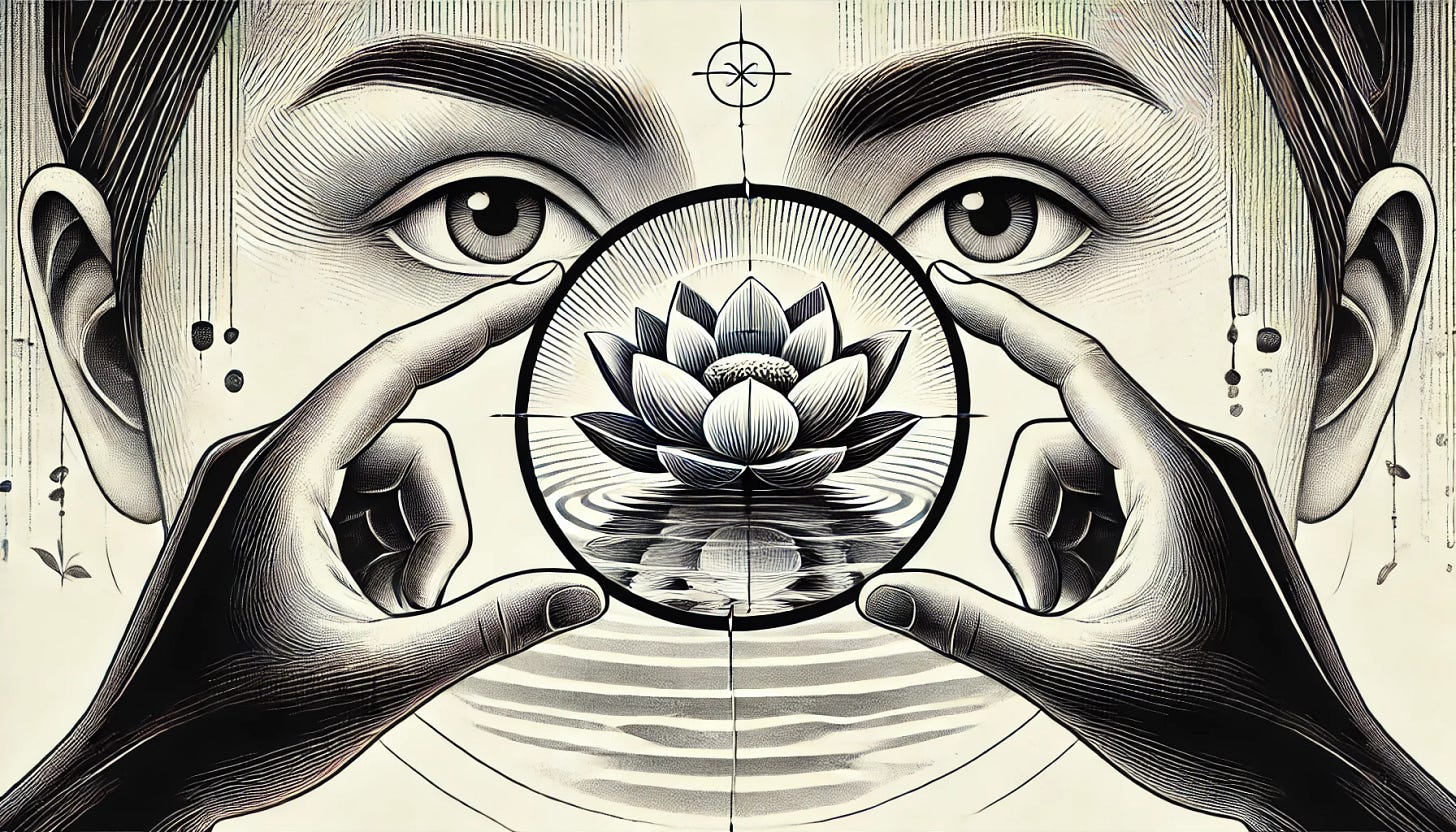Sleep = Awareness of Nothing…?
Sutra 10: Abhava Pratyaya Alambana Vrittir Nidra — Sleep is the mental modification based on the absence of content.
This is the first Sutra where the translation and commentary I’ve been working with feels, in my opinion, a little inadequate.
Here it is directly (in English),
The mental modification supported by cognition of nothingness is sleep.
The Swami provides some (brief) additional commentary referencing the idea of deep sleep, where you rest so fully that you have no memory of what was happening in your mind.
Remember that this is the 4th type of mental fluctuation (out of 5) — these are the first three:
Right knowledge (clear perception of reality)
Misconception (warped perception of reality)
Imagination (thought which has no direct correlation to reality)
In a sense, it’s super interesting that sleep even makes this list.
We are listing out the main variations of thought, right? Memory is the 5th. So if sleep is to be understood as the absence of conscious thought (cognition of nothingness), why not just leave it off the list?
Thinking about “nothing” isn’t really possible, nor is completely shutting off the brain (while alive at least). So this feels like something you either have to read into super hard to sort of invent insights, or just brush off entirely.
Instead, I’m going to reflect on the idea that it’s an “inadequate” piece of these “yoga instructions”, and in so doing, hopefully illustrate a more useful way to look at this Sutra (and other scripture-type texts) — maybe we’ll find that it’s more “adequate” than appears at first glance.
I’m not going to do the typical “with what we now know in modern science” blah blah blah thing. There is certainly plenty of neuroscience to dig into if you’re interested in the (now) easily measured aspects of what’s going on in the brain during sleep (of any kind, deep or not). To my read, that kind of reductive writing is primarily indicative of either a superiority complex (trying to look smart by stepping on/over things that have been well regarded in the past), and/or dogmatic thinking (if it isn’t 100% true then it’s 100% false).
Nor am I going to do the apologetic’s dance with the “here’s what they really meant” or “language is limited” angles. I’d bet that sort of response usually comes from the other side of the spectrum (inferiority complex) — and in most cases, it’s wholly inadequate. Trying to reinvent someones intentions based on what they wrote is like trying to put the scattered seeds of a white dandelion back where they were on the stem after they’ve been blown off.
Let’s think about it like this — if there was a machine that could transport your consciousness across space and time and somehow install it as an observer within the consciousness of Patanjali back in the 2nd century BCE, maybe we could claim to know what he meant by every word.
But even if that machine did exist, you could be certain of your knowing, but could anyone else?
You telling them with whatever oblique awareness of modern neuroscience you might individually have could perhaps be more convincing. But ultimately, they’d need a machine to install themselves within your consciousness when you journeyed back to creep on Patanjali…and so would the next person they tell…and so would the next…
Side bar — watch Being John Malkovich for a weird, wild depiction of this concept. It’s one of those 90s films that you probably didn’t know exists but is actually really cool.
As far as I know, there is no such machine. And even if there was, you might want to think about the teleportation paradox before jumping in.
However!
There is a technology that, if used diligently and correctly, permits you to experience firsthand exactly what Patanjali was experiencing when he wrote the Sutras. And you don’t have to travel through space and time (at least in a literal sense).
It’s called yoga.
Yeah…I know…that was kind of…lame. But at least in my head this morning, taking that little detour through imagining if we could transfer our consciousness into Patanjali’s was informative for one key reason — you can’t remove his consciousness if you want to see his thoughts, but you can see and experience just the same as he did.
Let’s unpack:
…permits you to experience firsthand exactly what Patanjali was experiencing…
This looks like a contradiction to what I wrote earlier, but it actually depends on if you’re thinking about experiencing as ‘that which fills conscious awareness’ or as the awareness itself.
That is to say, there is:
a thing (noun) we call “experience”, meaning something one experiences [a ride on a roller coaster],
and there is a thing that it is to (verb) experience one of those things (noun 1) [the feeling of riding the roller coaster]
but there is also the fact of experience itself (noun 2)…[the space in which the feeling of riding the roller coaster occurs].
If I had said there was a machine that could replace your consciousness in the exact space and time where Patanjali existed 2200 years ago, all you’d have is your own ‘experience’ of whatever precise external stimuli were present for him. That’s not necessarily going to inform you about why he wrote what he wrote about sleep. The degree to which your experience is still layered over by misconceptions and delusions is the degree to which it will differ from the base level of raw information presented by the world at large in that space.
Generally, we default to thinking about “experience” as the contents of consciousness.
The sensations, notions, and feelings that bubble up within the space of our awareness are usually the sole focus. In order for someone to know exactly what it’s like to be you, they’d need to ‘walk a mile in your shoes’ — what the 19th century German sociologist Max Weber called verstehen.
The thing is…it’s literally impossible.
Now, there’s definitely a level of cross-cultural understanding that can be achieved through traditional travel and poignant experiences. I spent 6 months living in Chile while learning Spanish and my level of understanding for what it’s like to be a Chilean is definitely non-zero at this point.
However, it can never be complete.
Even if I did decide to spend the rest of my life living in Chile and after 20 years I had completely eradicated my American accent and foregone that part of my identity, am I really Chilean? Even if you wanted to argue “yes”, there are still an infinite number of other realities that I’m effectively choosing not to live as a result. What’s it like being Dutch? Australian? Young in the 90s vs young in the 50s? Married with kids vs. single with dogs? Seat 18D vs seat 18E?
No single person can aggregate the totality of human experience into one consciousness in one lifetime.
You’d be God if you could. We are temporally bound beings — there’s only one country I can visit at a time, and only one seat on one roller coaster than I can sit in.
Our bodies eventually die, bringing our memories back down into the earth with them. Even if we wrote them all down and collected everyone’s memories into one massive Google Doc then asked ChatGPT to analyze it and write us new laws for how to be nice to one another, by the time it finished writing its reply (even if it only took a millisecond) the world would have changed again, since it’s constantly changing, and we’d technically have to reevaluate.
Maybe that’s why it seems so impossible for us to root out racism, sexism, ageism, and all the other divisive -isms. We are still generally convinced that the important things to think about are the superficialities that fill the space in which our conscious awareness manifests. And we use those superficialities to construct the identities such as nationality, class, and social status that we use to differentiate (for better or worse) betwixt one another.
Yoga teaches us to find the substrate beneath all those fillings.
When we practice, we dial the attention down into the thing that necessarily resides in that space at all times — the breath. By its own nature, it can’t be anywhere other than here and now. You can’t keep it in the past, you can’t save it for the future—you can only experience it as an experience appearing in the space of your experience.
Over time, the aim is to use that observance as a guide to help you learn to reside in (or more correctly, as) that space. Simply noticing what arises as you move through the various postures, aligning and re-aligning your structures to positions of relative balance based on your observances.
So yah, maybe if you’d already become a yoga sage and were somehow transported into the instance of Patanjali where and when he decided to write Sutra 1.10 you’d be like “Ok I totally get it, sleep is the mental modification based on the absence of content, I see what he saw.”
But here’s the beautiful thing about yoga — once you’re a yogi, you already see it.
There’s no need to be teleported 2200 years back with some neuroscience books to write an “improved” version of the Sutras (that probably never gets read by people in its own era because it’s referencing information that would sound insane to them).
All we are trying to do is observe the same basic facts of existence that are available to everyone, no matter where, when, or how they lived.
Over time, with practice, awareness of those facts permeates your being and becomes more stable. In the same way, the first time you try balancing half moon you might be there for a moment, but must soon leave and revisit over and over before your muscles have the strength to remain for longer periods of time.
So for me, the point is not whether or not we comprehend Patanjali’s words, nor even if they are fully accurate or not to whatever advanced understanding of brain wave activity we have at the moment. The point is whether or not we are trying to create the same clarity of perception in our own consciousness.
That’s why I consider yoga as a technology — if we learn to use it well, we have no need for the user manual.
It’s still useful to have on hand from time to time, of course — and with the amount of “updates” modern life is pushing out on us, it’s important to have some reference point for re-learning the motions every time the damn buttons move on you 🤣
On the other hand, instruction alone is definitely useless.
When you move through a flow, the instructor is your guide and visual example…but if you just watch them, what good is it? The idea is to be moving your body, noticing your thoughts. Injury tends to occur when you leave your focus on the externalized shapes concepts and ignore the sensations/realities in your own body.
Yoga is teaches us to focus on primary source information.
And to start, we pay attention to just one primary source — our own experience.
So instead of dismissing Sutra 10 (or writing an unnecessarily long reflection about it like I did) maybe just contemplate the nature of sleep and compare it to your other experiences. At the end of the day, a feeling of tiredness arises, and after a few hours of Netflix, somehow you fall asleep.
Sometimes you remember what happens in your mind during that period, sometimes you don’t. But even if you woke up in a pitch dark room, you know that time passed.
Your awareness wasn’t filled with the same stuff, but it was still there. That, more than anything, seems like something worth realizing.
The timeless in you is aware of life's timelessness. And knows that yesterday is but today's memory and tomorrow is today's dream.
Kahlil Gibran








